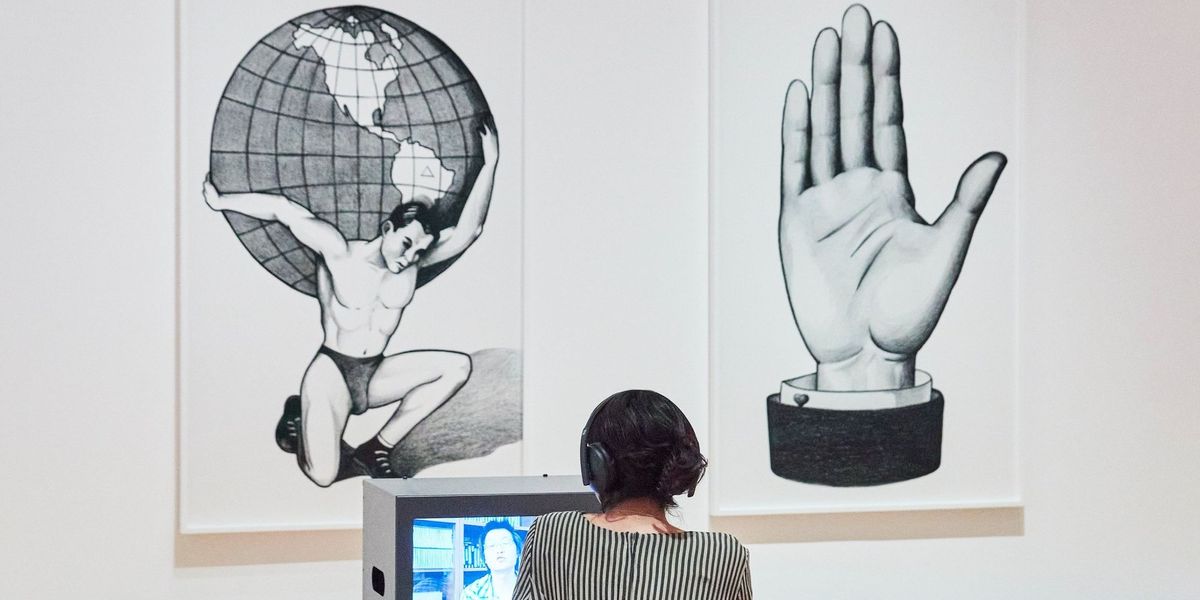
Video art has shaped and challenged our perception of reality, politics, and culture. This statement is explored at The Museum of Modern Art (MoMA) in New York where Signals: How Video Transformed the World, a major exhibition that showcases over 70 media works from the past six decades, is on view.
Signals reveals the ways in which artists have used video as an agent of global change, from televised revolution to electronic democracy. The exhibition highlights works that have never been seen before at MoMA, as well as iconic pieces by pioneers such as Nam June Paik, Stan VanDerBeek, and Dara Birnbaum. The exhibition is organized into four thematic sections: Networks, Publics, Resistance, and Futures. Each section explores how video has enabled artists to create new forms of communication, participation, and activism across time and space.
Last chance! See how video transformed the world in #Signals, a major exhibition that brings together over six decades of media works from the #MoMACollection. Through July 8 → https://t.co/411lX3ty6Y pic.twitter.com/aJDvALEuhm
— MoMA The Museum of Modern Art (@MuseumModernArt) June 26, 2023
In Networks, we see how video has connected people and places in unexpected ways, from Kit Galloway and Sherrie Rabinowitz's Hole in Space (1980), a split-screen satellite broadcast between New York and Los Angeles that surprised and delighted unsuspecting pedestrians, to Martine Syms' Lessons I-XXX (2014–18), a series of short videos that combine personal anecdotes, pop culture references, and internet memes to construct a complex portrait of black identity.
In Publics, we see how video has transformed public space and public discourse, from Marta Minujín's Simultaneidad en simultaneidad (1966), a live transmission of simultaneous events in Buenos Aires, Paris, and New York that challenged the notion of a single center of cultural production, to Lawrence Abu Hamdan's Walled Unwalled (2018), a multi-channel installation that examines the role of sound and listening in legal cases involving border walls, prisons, and human rights violations.
In Resistance, we see how video has been used as a tool for protest and critique, from Gretchen Bender's Total Recall (1987), a montage of images and sounds from television, advertising, and Hollywood that exposes the manipulative power of mass media, to New Red Order's Never Settle (2020), a video that invites viewers to join a secret society that aims to decolonize America by confronting its myths and histories.
In Futures, we see how video has imagined alternative realities and possibilities, from Stan VanDerBeek's Movie-Drome (1964–65), a dome-shaped theater that projected experimental films and animations onto its curved walls, creating an immersive and psychedelic experience, to Ming Wong's Making Chinatown (2012), a video installation that re-enacts scenes from Roman Polanski's Chinatown (1974) with the artist playing all the roles, challenging stereotypes and expectations of race and gender.
Signals is not only a comprehensive survey of video art history, but also a timely reflection on how video continues to shape our world today. As Stuart Comer and Michelle Kuo, the curators of the exhibition, write in their introduction: "Video is everywhere today—on our phones and screens, defining new spaces and experiences... In other words, video has transformed the world."
The exhibition has received positive reviews from critics and audiences alike. For example, Jenny Wu from ArtReview writes: "Signals proceeds from the truism that the televisual image is both constructed and unstable... Throughout the show... rogue signals persist across time and geography... forming the emotional rip current of what is... a show that’s all about visuals."
A special selection of video works from the exhibition are available online on The Signals Channel. Signals closes on July 8th, 2023.
